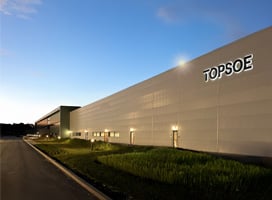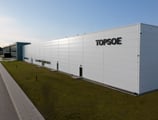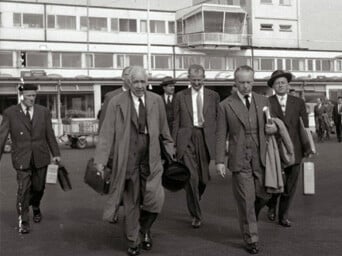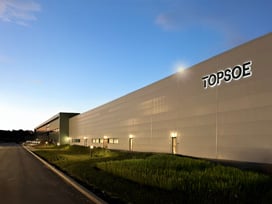Stable Operation with Proven Secondary Reformer Design
The air-fired secondary reformer is essential in natural gas-based ammonia plants as it is the simplest way of introducing the nitrogen required for ammonia synthesis. Unlike the upstream tubular primary reformer, the secondary reformer is adiabatic, and the operating conditions are more severe. Combustion of hydrocarbons in air provides the heat input required for the reforming reaction, but it also leads to a relatively high temperature. These conditions necessitate careful design in order to achieve reliable, stable and safe operation.
There are in general three processes that take place in the air-fired secondary reformer: 1) mixing of air and process gas, 2) combustion of hydrocarbons, and 3) methane conversion by steam methane reforming over the catalyst bed. Proper and efficient mixing of air and process gas in the top of the secondary reformer is critical for the performance of the secondary reformer. This key feature is one of the many offered by Topsoe’s secondary reformer and in particular by the proprietary burner. The optimized burner maintains a controlled flame in the combustion zone and a uniform gas flow into the catalyst bed, both of which are essential for proper mixing.
The catalyst bed in Topsoe’s secondary reformer consists of several layers of Topsoe’s own secondary reformer catalysts, which ensure conversion to chemical equilibrium while helping to maintain low and stable pressure drop throughout the secondary reformer.
State-of-the-art developments in equipment and catalysts as well as improvements in process optimization are a direct result of Topsoe’s extensive experience and in-depth understanding of industry needs and process details. With the proven design of Topsoe’s air-fired secondary reformers, ammonia plant producers can achieve the stable and reliable operation they need.
.png)







![SAF Airplane runway[1]-1 1](https://www.topsoe.com/hs-fs/hubfs/SAF%20Airplane%20runway%5B1%5D-1%201.png?width=800&height=640&name=SAF%20Airplane%20runway%5B1%5D-1%201.png)





